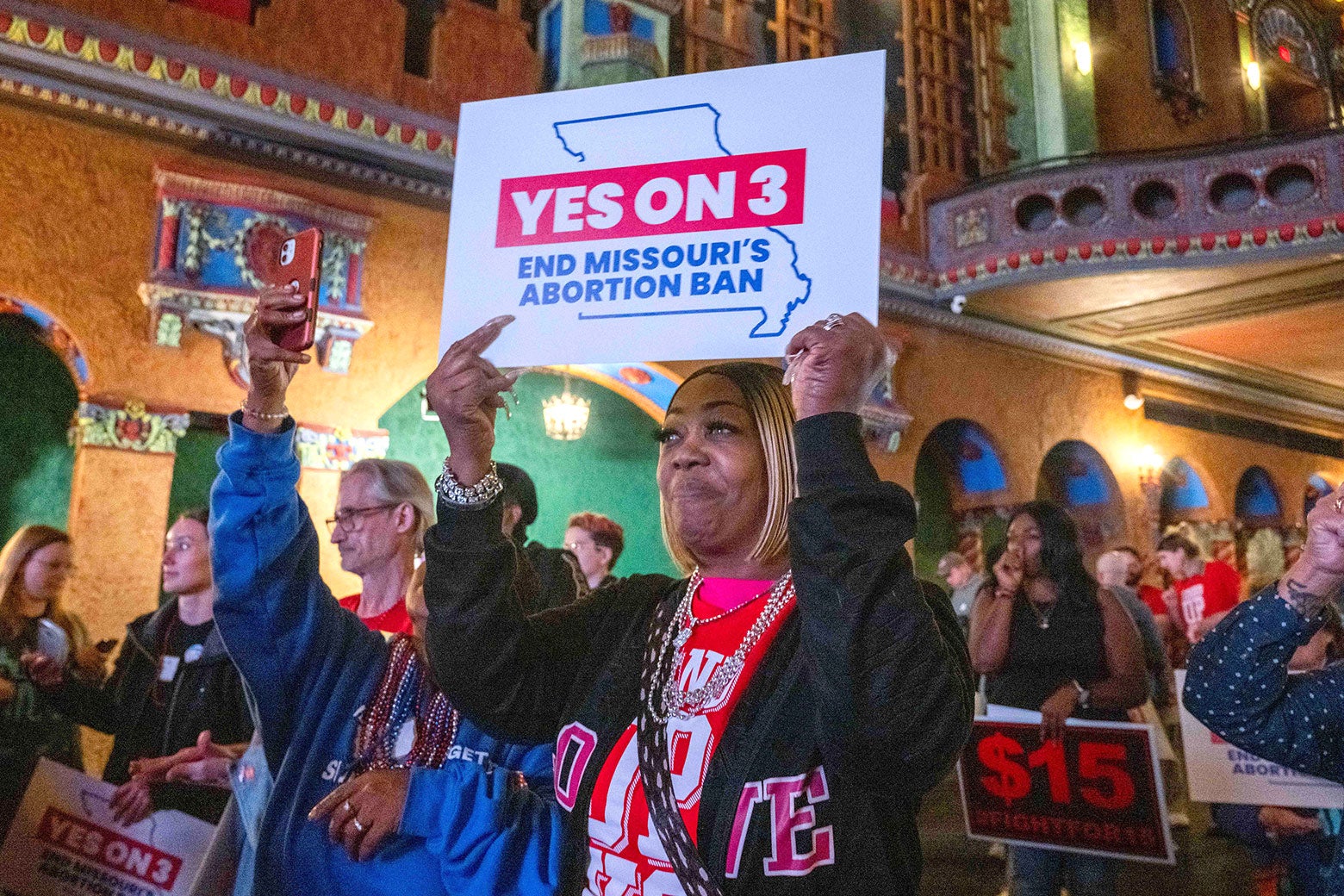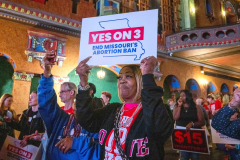Jurisprudence

Dominick Williams/The Kansas City Star/ZUMA Press Wire via Reuters Connect
Sign up for the Slatest to get the most insightful analysis, criticism, and advice out there, delivered to your inbox daily.
Missouri voters in November chose to pass a ballot measure establishing reproductive rights in a state with one of the strictest abortion bans in the nation. Last week, because of a decision by the Missouri Supreme Court, abortion is again unavailable in the state. What happened won’t necessarily last, but it’s reminder that ballot measures won’t always be enough to protect reproductive rights.
Within days of the passage of Amendment 3, Planned Parenthood and other plaintiffs challenged the vast array of bans and restrictions in the state. Missouri not only banned virtually all abortions from the moment of fertilization but also enforced a variety of what are called TRAP (targeted regulation of abortion provider) laws. Clinics must have admitting privileges at a hospital within 15 miles and comply with state licensure rules and the rules governing ambulatory surgical centers. Other rules make patients wait 72 hours before getting an abortion or prohibit the decision to have an abortion for certain reasons. These laws made a big difference in dismantling abortion access even before the overturning of Roe. At one point, Missouri had more than 25 clinics. Before the state’s absolute ban went into effect, only one remained open.
In rulings handed down in December and February, a judge in Jackson County, Missouri, Jerri Zhang, blocked most of the TRAP laws ahead of a trial scheduled for early 2026. Abortions soon resumed in the state, even if access remained limited. Only three clinics opened, and these facilities performed only a handful of surgical procedures before the state Supreme Court’s order was issued.
The attorney general, Andrew Bailey, one of the most committed abortion opponents in the nation, appealed directly to the state Supreme Court, seeking a special order called a writ of mandamus. He agreed that the state’s absolute ban couldn’t survive under Amendment 3, but argued that other restrictions—the TRAP laws—were different because they protected women from dangerous procedures. He also argued that women wouldn’t be harmed if every clinic in Missouri shut down because they could get abortion pills online or travel out of state.
The state Supreme Court allowed the restrictions to go back into effect, all because of a technicality—the trial judge had applied an older standard for granting a preliminary injunction that asks whether the plaintiffs have a fair chance of succeeding. Missouri courts, since 2008, have followed a more demanding standard set forth by the 8th Circuit Court of Appeals focused on whether a plaintiff is likely to succeed at trial. Because the trial court cited the wrong case, abortion in Missouri came to a stop. The three open clinics canceled appointments and counseled patients on how to go out of state.
This is hardly a fatal blow for the plaintiffs. The judge may well already believe that the plaintiffs are likely to succeed, and the plaintiffs might have a relatively easy time making that case. Amendment 3 provides broad protections for reproductive rights, requiring not only that a state law serves a compelling interest but also that the government uses the least restrictive means of achieving its goal. And the state can’t discriminate against abortion by treating it differently from other medical procedures. The judge might conclude that there are less restrictive and more effective ways of protecting maternal health, or that TRAP laws don’t do much to improve patient health at all, as the U.S. Supreme Court did before Roe was overturned in a case about similar Texas regulations.
But what is happening in Missouri is still a sign about the limits of ballot measures. Missouri Republicans already have crafted a new ballot measure that voters will face, most likely in 2026. The proposal asks Missourians whether they want to “ensure women’s safety during abortions,” “ensure parental consent for minors,” and “allow abortions for medical emergencies, fetal anomalies, rape, and incest.” It would ban all abortions from fertilization in every other case—a fact that it doesn’t advertise. For good measure, it also asks whether voters want “to protect chil





